Abstract
At present, gene transfection insufficient efficiency is a major drawback of non-viral gene therapy. The 2 main types of delivery systems deployed in gene therapy are based on viral or non-viral gene carriers. Several non-viral modalities can transfer foreign genetic material into the human body. To do so, polycation-based gene delivery methods must achieve sufficient efficiency in the transportation of therapeutic genes across various extracellular and intracellular barriers. These barriers include interactions with blood components, vascular endothelial cells and uptake by the reticuloendothelial system. Furthermore, the degradation of therapeutic DNA by serum nucleases is a potential obstacle for functional delivery to target cells. Cationic polymers constitute one of the most promising approaches to the use of viral vectors for gene therapy. A better understanding of the mechanisms by which DNA can escape from endosomes and traffic to enter the nucleus has triggered new strategies of synthesis and has revitalized research into new polycation-based systems. The objective of this review is to address the state of the art in gene therapy with synthetic and natural polycations and the latest advances to improve gene transfer efficiency in cells
Keywords: DNA, gene therapy, nanoparticles, polycations, polymers, viral vectors, endosomes, reticuloendothelial system, polycation-based, serum nucleases
Current Gene Therapy
Title: Polycation-Based Gene Therapy: Current Knowledge and New Perspectives
Volume: 11 Issue: 4
Author(s): Marcio J. Tiera, Qin Shi, Francoise M. Winnik and Julio C. Fernandes
Affiliation:
Keywords: DNA, gene therapy, nanoparticles, polycations, polymers, viral vectors, endosomes, reticuloendothelial system, polycation-based, serum nucleases
Abstract: At present, gene transfection insufficient efficiency is a major drawback of non-viral gene therapy. The 2 main types of delivery systems deployed in gene therapy are based on viral or non-viral gene carriers. Several non-viral modalities can transfer foreign genetic material into the human body. To do so, polycation-based gene delivery methods must achieve sufficient efficiency in the transportation of therapeutic genes across various extracellular and intracellular barriers. These barriers include interactions with blood components, vascular endothelial cells and uptake by the reticuloendothelial system. Furthermore, the degradation of therapeutic DNA by serum nucleases is a potential obstacle for functional delivery to target cells. Cationic polymers constitute one of the most promising approaches to the use of viral vectors for gene therapy. A better understanding of the mechanisms by which DNA can escape from endosomes and traffic to enter the nucleus has triggered new strategies of synthesis and has revitalized research into new polycation-based systems. The objective of this review is to address the state of the art in gene therapy with synthetic and natural polycations and the latest advances to improve gene transfer efficiency in cells
Export Options
About this article
Cite this article as:
J. Tiera Marcio, Shi Qin, M. Winnik Francoise and C. Fernandes Julio, Polycation-Based Gene Therapy: Current Knowledge and New Perspectives, Current Gene Therapy 2011; 11 (4) . https://dx.doi.org/10.2174/156652311796150408
| DOI https://dx.doi.org/10.2174/156652311796150408 |
Print ISSN 1566-5232 |
| Publisher Name Bentham Science Publisher |
Online ISSN 1875-5631 |
Call for Papers in Thematic Issues
Programmed Cell Death Genes in Oncology: Pioneering Therapeutic and Diagnostic Frontiers (BMS-CGT-2024-HT-45)
Programmed Cell Death (PCD) is recognized as a pivotal biological mechanism with far-reaching effects in the realm of cancer therapy. This complex process encompasses a variety of cell death modalities, including apoptosis, autophagic cell death, pyroptosis, and ferroptosis, each of which contributes to the intricate landscape of cancer development and ...read more
Related Journals
 26
26
- Author Guidelines
- Bentham Author Support Services (BASS)
- Graphical Abstracts
- Fabricating and Stating False Information
- Research Misconduct
- Post Publication Discussions and Corrections
- Publishing Ethics and Rectitude
- Increase Visibility of Your Article
- Archiving Policies
- Peer Review Workflow
- Order Your Article Before Print
- Promote Your Article
- Manuscript Transfer Facility
- Editorial Policies
- Allegations from Whistleblowers
- Announcements
Related Articles
-
Pyruvate Kinase M2: Regulatory Circuits and Potential for Therapeutic Intervention
Current Pharmaceutical Design Review of Procedures Used for the Extraction of Anti-Cancer Compounds from Tropical Plants
Anti-Cancer Agents in Medicinal Chemistry Rational Drug Development Using Gene-Targeted Agents and Their Application in Anti-Gene Radiotherapy
Current Genomics Role of Genetic Factors in Statins Side-Effects
Cardiovascular & Hematological Disorders-Drug Targets CXCR4 Receptor as a Promising Target for Oncolytic Drugs
Mini-Reviews in Medicinal Chemistry Levamisole-Induced Leukoencephalopathy in Russia: Analysis of 30 Cases
Current Drug Safety Urokinase Receptor and Integrin Interactions
Current Pharmaceutical Design Pharmacological Modulation of Nitric Oxide Release: New Pharmacological Perspectives, Potential Benefits and Risks
Current Medicinal Chemistry Transfer of Biologically Important Molecules Between Cells Through Gap Junction Channels
Current Medicinal Chemistry Anticancer Antioxidant Regulatory Functions of Phytochemicals
Current Medicinal Chemistry Inhibitors of Cancer Stem Cells
Anti-Cancer Agents in Medicinal Chemistry Potential Cancer Gene Therapy by Baculoviral Transduction
Current Gene Therapy Triple Negative Breast Cancer - BCL2 in Prognosis and Prediction. Review
Current Drug Targets Novel Agents Aiming at Specific Molecular Targets Increase Chemosensitivity and Overcome Chemoresistance in Hematopoietic Malignancies
Current Pharmaceutical Design Gankyrin Oncoprotein: Structure, Function, and Involvement in Cancer
Current Chemical Biology Nitric Oxide: Target for Therapeutic Strategies in Alzheimers Disease
Current Pharmaceutical Design Optimal Saturated Neuropilin-1 Expression in Normal Tissue Maximizes Tumor Exposure to Anti-Neuropilin-1 Monoclonal Antibody
Anti-Cancer Agents in Medicinal Chemistry Multitarget-Directed Ligands: Innovative Chemical Probes and Therapeutic Tools Against Alzheimer's Disease
Current Topics in Medicinal Chemistry Palmitoylethanolamide Regulates Production of Pro-Angiogenic Mediators in a Model of β Amyloid-Induced Astrogliosis <i>In Vitro</i>
CNS & Neurological Disorders - Drug Targets Decreasing the Metastatic Potential in Cancers - Targeting the Heparan Sulfate Proteoglycans
Current Drug Targets












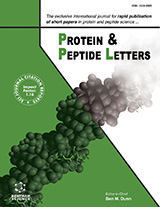
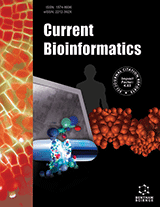
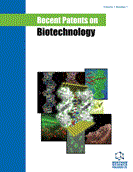
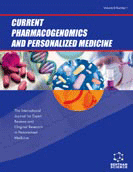
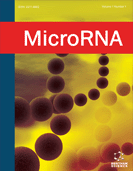
.jpeg)








